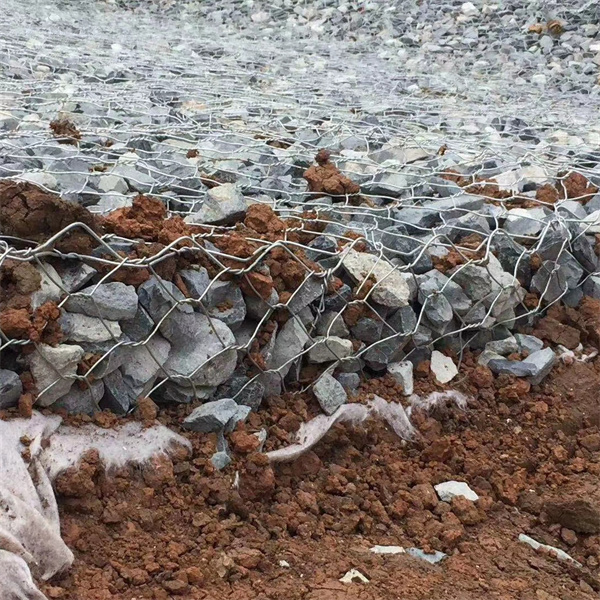ستمبر . 28, 2024 11:38 Back to list
Affordable Gabion Wall Facade Solutions for Modern Landscape Design and Environmental Benefits
Exploring the Benefits of Wholesale Gabion Wall Facades
In recent years, the demand for innovative and sustainable building materials has surged, leading architects, builders, and landscape designers to explore new avenues for enhancing aesthetic appeal and structural integrity. One such solution that has gained popularity is the gabion wall facade. Known for their versatility and durability, gabion walls are not only eco-friendly but also offer a unique aesthetic that can enhance any project. This article delves into the attributes, advantages, and applications of wholesale gabion wall facades.
What Are Gabion Walls?
Gabion walls consist of wire mesh cages filled with various materials, typically stones or gravel. These walls can vary in size and shape, making them adaptable for different projects, ranging from residential landscaping to commercial buildings. The term gabion originates from the Italian word 'gabbione,' meaning big cage, perfectly describing the structures' design.
Aesthetic Appeal
One of the most compelling reasons to consider gabion wall facades is their aesthetic versatility. They can be customized with a wide range of stones or other materials, allowing architects to choose colors and textures that complement specific design visions. Whether aiming for a rustic look with rough-hewn stones or a sleek modern appeal with polished aggregates, gabion walls can be tailored to fit various design styles, making them suitable for any environment.
Durability and Stability
Gabion walls are incredibly durable and provide excellent stability. The wire mesh is typically made from galvanized steel or coated with PVC, providing resistance against corrosion and weathering. The infill materials, often sourced locally, contribute to the wall's overall strength. This durability makes gabion facades suitable for a range of applications, including retaining walls, sound barriers, and decorative features.
wholesale gabion wall facade

Sustainability Factor
In an era where environmental consciousness is paramount, gabion walls present a sustainable building solution. The materials used for infill can often be sourced from local quarries or even recycled materials, greatly reducing transportation emissions and costs. Furthermore, the empty space within the gabion structure allows for drainage, which minimizes water accumulation and helps prevent erosion. This drainage capability is particularly beneficial in landscape applications, where maintaining the natural flow of water is essential.
Cost-Effectiveness
Opting for wholesale gabion wall facades can also be a financially savvy decision. Purchase in bulk often translates to significant savings on materials, and the reduced labor costs associated with their installation further enhance their economic appeal. Gabion walls can be configured relatively quickly, reducing the overall construction time and associated costs. As a result, builders and developers can enjoy the dual benefits of aesthetic enhancement and fiscal responsibility.
Versatile Applications
Gabion wall facades have a wide range of applications across various sectors. In residential projects, they can create stunning privacy walls, garden edging, or decorative features that enhance outdoor spaces. In commercial settings, they can be used for striking building façades, noise barriers, or even as part of an environmental management strategy. Their flexibility makes them suitable for numerous contexts, showcasing their adaptability.
Conclusion
The wholesale market for gabion wall facades presents a unique opportunity for those involved in construction and design. With their captivating aesthetic, robust durability, sustainability, cost-effectiveness, and versatility, gabion walls are an excellent choice for modern building projects. As the industry moves toward greater sustainability and innovative design, gabion walls stand out as a solution that meets both environmental and aesthetic needs, paving the way for future advancements in architectural practices. Embracing gabion wall facades could very well be a step toward a more sustainable and visually appealing built environment.
-
HESCO Gabion Baskets for Coastal Erosion Prevention
NewsAug.22,2025
-
Longevity and Durability of River Rock Gabion Walls
NewsAug.22,2025
-
How to Integrate Gabion 3D Walls in Urban Planning
NewsAug.22,2025
-
Reno Mattress Gabion Applications in Civil Engineering
NewsAug.22,2025
-
How to Install Wire Mesh for Gabion Baskets Properly
NewsAug.22,2025
-
Best Materials for Filling a Chain Link Gabion
NewsAug.22,2025
-
Wire Mesh Thickness Impact on Gabion Wall Load Bearing
NewsAug.12,2025






